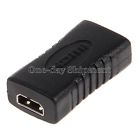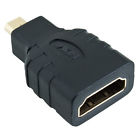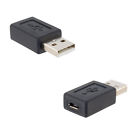Preamble
I bought a Raspberry Pi in Thailand at the start of the year. I got it working with a Motorola Atrix Lapdock (Lapdock for Motorola ATRIX 4G 11.6″ Motorola AT&T) that I purchased new on eBay for about £70, from Israel.

It has a Hebrew keyboard and the brackets glyphs are on the incorrect keys, but apart from that it is fine.
I then built an Arduino Hoody (which is equivalent to an Arduino shield), as described in the Instructables guide: The Raspberry Pi – Arduino Connection
Issues with the Pi Lapdock connection
I found these two links (amongst others during the troubleshooting phase) to be the most useful:
I went through an incredible amount of adapters and leads, and combinations thereof, and actually probably spent more than if I had bought a ready made kit of cables. One of the issues seemed to be that a number of USB cables and adapters did not carry the correct signals. In the end I used the following:
- Female-to-female micro HDMI-to-micro HDMI adapter (eBay item: Micro HDMI Type D Female to Micro HDMI Type D Female Connector Adapter For PC (400754637721 ), £3.51)

- Male-to-female micro HDMI-to-HDMI adapter (eBay item: HDMI Female to Micro HDMI Male F/M Converter Adapter Connector HD TV Camera OP (281527797454 ), £0.54)

- Female Micro USB splitter cable to 2 x male micro USB (eBay item: Micro USB 2.0 Splitter Y 1 Female to 2 Male Data Charge Cable Extension Cord (400826436393 ), £0.83)

- Female Micro USB to male USB (eBay item: USB 2.0 A Male Plug to Micro B 5 Pin Female M/F Connector Adapter Convertor (181457646410 ), £0.65)

The USB configuration is as follows:
- The shorter male micro USB goes to the micro USB power input on the Pi, and;
- The longer male micro USB goes to the female micro USB to male USB adapter, which in turn plugs into one of the Pi’s four USB ports.
However, the main issue, that I had, and which caused me to try many different adapters, turned out to be a simple mechanical matter – the female micro USB socket of the USB splitter cable was too fat to properly seat itself upon the Lapdock’s male micro USB connector, and required filling down on one corner (see photo). It was only after careful inspection that I realised this to be the case, after about 3 months of abortive attempts.
There is still the issue that the power to the Pi gets shut off and then switched back on when you close the lid, which requires you to manually pull the power from the micro USB power socket, otherwise the Pi boots back up when the lid is closed (obviously opening up the lid, from such a state, will then cause the power to be disrupted once again). A cable with a built in switch would solve this issue, and are available from the custom cable kits one sees on eBay. However, it is not too much of an issue as I generally leave the lapdock and Pi permanently powered on anyway.
Issues with the Arduino Hoody
Following the instructables guide, I have had some issues with the Minicom setup. It was as if the number of bits and/or stop/parity were not set correctly, as I only received garbage characters echoed back.
Photos
My Raspberry Pi 2 connected to a Motorola Atrix Lapdock with an Arduino 3.3V Pro Mini “hoody”:

The connectons between the micro HDMI and micro USB from the lapdock to the Pi, are shown below:

The lapdock showing the Pi running Fedora Mate 13, with the Arduino IDE in the foremost window:







3 thoughts on “Raspberry Pi, Motorola Atrix Lapdock and Arduino Hoody”